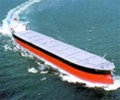The US and China must learn to balance competition and cooperation in the coming era

We live in a critical time. Few world leaders could have imagined that humanity in 2020, armed with advanced technology and unparalleled civilization, would be put on pause by a pandemic.
The unprecedented difficulties our society is facing pose tremendous challenges for world leaders and for each of us: from how individuals can stay connected to how countries co-exist; from isolation and reducing human contact to maintaining global virtual connectedness; from preparing for the pandemic with minimal disruption of economic activities to reopening the economy without risking public health; from competing for global medical supply chain security to collaborating on finding a cure or vaccine for the virus; from building up domestic solidarity (or patriotism/nationalism) to avoiding the costs of dismantling international cooperation. How to balance these complexities in the context of the current uncertainties will have a massive impact on the world’s political, economic and societal order once the COVID-19 crisis has passed.
The headlines these days, however, are filled with finger-pointing as actors seek to apportion blame for the virus. The disinformation and negative sentiments from both US and China towards each other are increasingly dangerous. Even if the coronavirus has not prompted leaders to cooperate, it should at least demonstrate that competing efforts will not resolve the crisis, and antagonism will not guarantee any wins. It’s not much of a win if you have to harm your own interests to beat a competitor.
In decades past, the leaders of the US and China chose the path of engagement, exploring complementary interests for win-win outcomes. This unprecedented new era needs visionary leaders who can engage wisely with the new reality, and who can balance competition and cooperation to enable healthy co-existence and new successes, despite the countries’ differences.
There have been many loudly proclaimed predictions for the post-COVID-19 era, such as ‘de-globalization’, ‘regionalization’ or ‘localization’. The disruption to global supply chains has prompted many businesses to rethink their offshore manufacturing and business partnerships. Discussions are underway on how to rebuild or diversify supply chains. National borders and airlines have been temporarily closed, which may have the unintended effect of putting up real barriers between nations.
Coincidentally, the current wave of technological revolution seems to be enabling these economic and geopolitical changes. While the internet revolution decades ago democratized the flow of information and made globalization trending, the Fourth Industrial Revolution taking place today will automate or augment many jobs that require repetitive human labour, potentially democratizing labour and logistics costs and levelling the playing field for global businesses. If the COVID-19 crisis will indeed accelerate the return of localized supply chains, we may see many new smart and intelligent manufacturing facilities emerging locally, with labour and talent brought in from around the world.
These new technologies will reshape the global landscape by further revolutionizing industries, thus re-defining each country’s national competitiveness. Each country, therefore, is racing for technological supremacy in this new ecosystem by protecting their own knowledge and interests.
Following the 2008 financial crisis, China rejuvenated its economy with a 4 trillion yuan ($586 billion) stimulus package that went primarily towards infrastructure development nationwide. This time, China has plans – estimated to be worth $1.4 trillion – to ramp up new digital infrastructure including 5G, artificial intelligence (AI), data centres, cloud computing and the industrial internet, as well as a new ‘digital transformation partnership action plan’ for small and medium enterprises, in order to boost the country’s economic recovery as well as its technological self-reliance in the post-COVID-19 era.
These plans will lead to new dynamics. Will China once again leapfrog other countries post-COVID-19? Or will China lose its competitive advantage if multinational companies relocate their manufacturing facilities in other countries? Will the technological decoupling protect the US more than it harms China?
Over the years, China has built up its ‘Made in China’ manufacturing capabilities with a full value chain, but also its gigantic market. China’s industrial might provides tremendous use cases for AI, 5G and the internet of things (IoT) – for example, smart manufacturing, smart cities and smart grids, all of which produce abundant data which can be used to further enhance these smart solutions.
The US continues to hold its leading position in advanced research in many emerging technologies, including in the pharmaceutical and biotech industries that can help treat coronavirus. These sectors needs to find use cases and markets to maximize their value. However, some worry that deploying US technology in China may enhance China’s industrial competitiveness further. Think about China’s gigantic urbanization process over the past decades, which has provided a vast experimental field for international architects, leading to an explosion in flamboyantly beautiful airports, stadiums and skyscrapers across China.
Additionally, the US and China have vast differences in historical heritage, culture and values, which may impact how those technologies are utilized and governed. Further, many emerging technologies could be used in both commercial and strategic areas, leading to possible concerns around the ramifications for security.

Confirmed cases of COVID-19 in the US and China as of 22 May Image: Our World in Data
These risks pose new challenges for policy-makers. One, competing for supremacy. But does supremacy mean one side gaining more or the other side losing more? Two, prioritizing economics and security. Clearly, there is a delicate balance between protecting security and optimizing economic growth, and it needs to be thought out and executed with wisdom and foresight. Even though the new United States Strategic Approach To China, released on 20 May 2020, lays out a competitive roadmap, it does not rule out cooperation completely.
COVID-19 is accelerating this new round of digital transformation and industrial revolutions worldwide. Designing new frameworks to co-exist and exploring new shared interests must be key to maintain the world’s open innovation ecosystem. Competition and cooperation are not contradictory; cooperation is embedded in the very idea of competition. Robust competition leads to speedy advancement and heightened prosperity. Disengagement or building barriers could risk disintegrating of the global innovation ecosystem—or being left out of the system, harming both self interest and the eco-system as a whole.
Fortunately, technological advancement in general is a virtuous cycle, with both local and global benefits. Each country’s science and technology input could contribute to the overall advance of scientific discovery and technology advancement of humanity, as well as the global effort to address environmental, public health and natural disasters, as well as other challenges such as cybersecurity. Defining multilateral standards around adoption, ethics and accountability for emerging technologies also requires collaborative efforts to ensure global compatibility, efficiency and interoperability.
We should feel fortunate that we are witnessing another revolution in human history – one whose benefits we can reap in both our professional and personal lives. This will only happen, however, if our leaders can master the art of competing for prosperity while finding new common interests on which to collaborate. This is the art of new leadership.
Source: World Economic Forum

 Hellenic Shipping News Worldwide Hellenic Shipping News Worldwide, Online Daily Newspaper on Hellenic and International Shipping
Hellenic Shipping News Worldwide Hellenic Shipping News Worldwide, Online Daily Newspaper on Hellenic and International Shipping





















 PG-Software
PG-Software